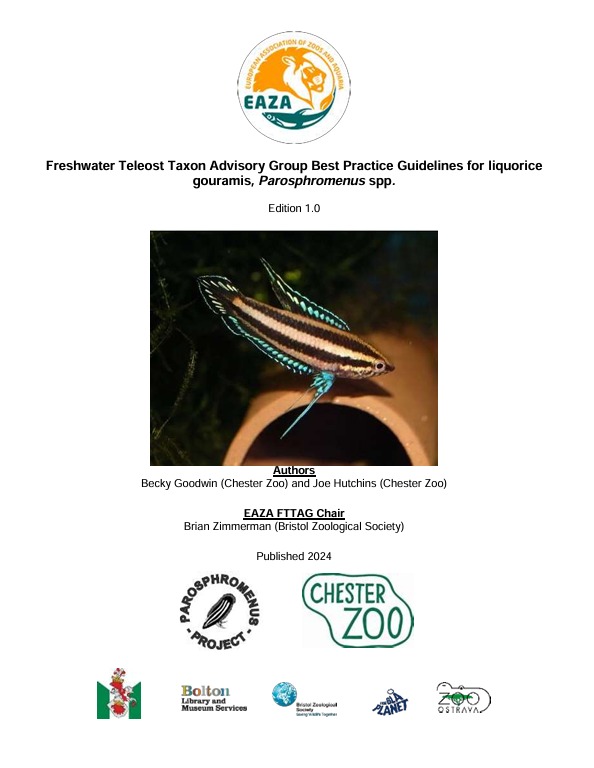The Parosphromenus Project (PP) is committed to the ongoing support of ex-situ breeding for all Parosphromenus species, as we regard each of these species as threatened to some extent. For many years, our primary tool in this endeavor has been the Census Report, where private keepers of Parosphromenus species report their stock biannually. This allows us to monitor the status of these species in private collections.
However, the threat to Parosphromenus habitats—specifically the peat swamps of Southeast Asia in Malaysia and Indonesia—continues to grow. As a result, many organizations now consider urgent conservation actions necessary.
In the summer of 2023, a significant report by ASAP, Mandai Nature, and Shoal provided a strategic framework for the urgent conservation of 49 species of freshwater fish, five of which are Parosphromenus species.
The report outlines essential tools for the conservation of endangered species, which the Parosphromenus Project is committed to implementing. One key tool is the development of ex-situ breeding programs, which can be necessary and beneficial for some species, alongside other efforts such as in-situ breeding and habitat conservation.
While the Parosphromenus Project has limited resources and capabilities regarding habitat protection and local in-situ programs, we can contribute significantly to ex-situ conservation efforts.
The report highlights the potential future importance of ex-situ breeding programs in zoos and aquariums for certain species. The Parosphromenus Project has already established connections with and is collaborating with several European zoos and aquariums, and it is our goal to continue and expand this work. We also aim to follow the report’s guidelines on maintaining proper ex-situ breeding programs.
Ex-situ breeding programs are not just about maintaining populations. While the report acknowledges that all efforts are valuable, even under less-than-ideal conditions, the Parosphromenus Project is dedicated to ensuring that the best possible conditions are met. Critical factors such as genetics and population size will continue to be monitored and improved.
One of our key contributions in recent years has been the publication of the ‘Best Practice Husbandry Guidelines for Parosphromenus spp.’ in collaboration with Chester Zoo. As more zoos and public aquariums engage in the conservation of Parosphromenus species, having an accurate and reliable manual becomes increasingly important. We are proud to have achieved this milestone.
In 2024, we have established connections with zoos and aquariums for the following species: P. filamentosus, P. deissneri, P. bintan, and P. quindecim. We also aim to establish similar connections for P. gunawani as soon as possible.
Both P. quindecim and P. gunawani are listed as critically endangered species and are two of the five Parosphromenus species mentioned in the report. Within the PP, we consider P. deissneri and P. bintan to be equally critically endangered, even though they may not yet be listed as such by the IUCN.
A major work which has been completed by Becky Goodwin and Joe Hutchins at Chester Zoo – and which the Parosphromenus Project has contributed to has now been approved by and made available online by EAZA. Acknowledgement also to Brian Zimmerman, Bristol Zoo Project, Bolton Library and Museum Services, Den Blå Planet, Zoo Ostrava, Malmö museum
© K. Keibel
Link to Husbandry Guidelines for Parosphromenus spp.
 Parosphromenus species is by now kept by a number of Zoo’s in Europe, – as part of the difficult conservation effort for the species of Parosphromenus threatened in many of their original habitats.
Parosphromenus species is by now kept by a number of Zoo’s in Europe, – as part of the difficult conservation effort for the species of Parosphromenus threatened in many of their original habitats.
To celebrate this we would like to contribute to this theme here on the front-page of our new version of the homepage.
leo.

